All textiles are susceptible to environmental damage, and wall hangings and tapestries are particularly vulnerable because they are often displayed without protection. Pests, UV light and inappropriate hanging are three of the most important things to watch out for.
Pests are attracted to dust and dirt and will eat natural fibres, so keeping tapestries and wall hangings clean is a priority.
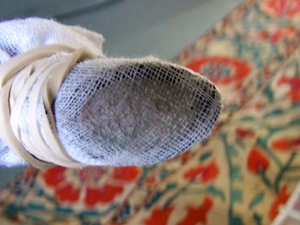
The best way to clean textiles is with a museum brush vac (MBV) and textile netting, which allows dust and dirt to be gently sucked away without causing damage. Generally this type of conservation cleaning should be carried out every one to two years, depending on the location of the hanging. (If a hanging is located in a high foot traffic area then it should be cleaned more frequently.) Regularly check all tapestries and wall hangings for any signs of pests, and using a museum trap to monitor insect activity is advisable.
MBV head - showing dirt from tapestry
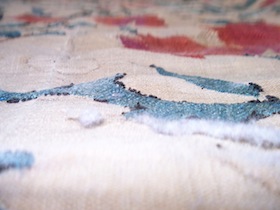
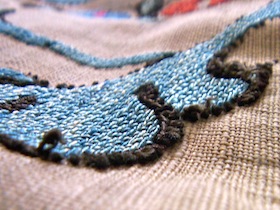
Antique Wall Hanging - before cleaning Antique Wall Hanging - after cleaning
Displaying tapestries or wall hangings in bright or direct sunlight will cause fading and also damage the textile fibre. A good way to lessen light damage is to draw curtains or blinds in the room where the hanging is located whenever the room is not in use. UV filters can also be fitted to windows.
It is very important to avoid straining when displaying tapestries and wall hangings, so proper support is essential. Evenly distributed weight along the hanging can be achieved by sewing a piece of Velcro along one edge and then mounting the other side on a wand which can be fixed to the wall. (If the wall hanging is fragile or valuable or you have any concerns about damaging it, then always seek professional help.)
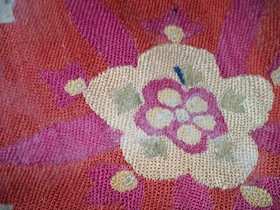
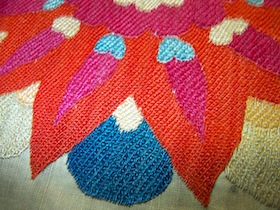
Before cleaning After cleaning
Ideally tapestries and wall hangings should be mounted slightly away from the wall to avoid possible damage from moisture or dampness, and for the same reason it is best to hang them on an internal wall. Tapestries and wall hangings should ideally be lined, and finally do not mount them directly above a radiator or close to bright spotlights.
For a brief history of tapestry making click here